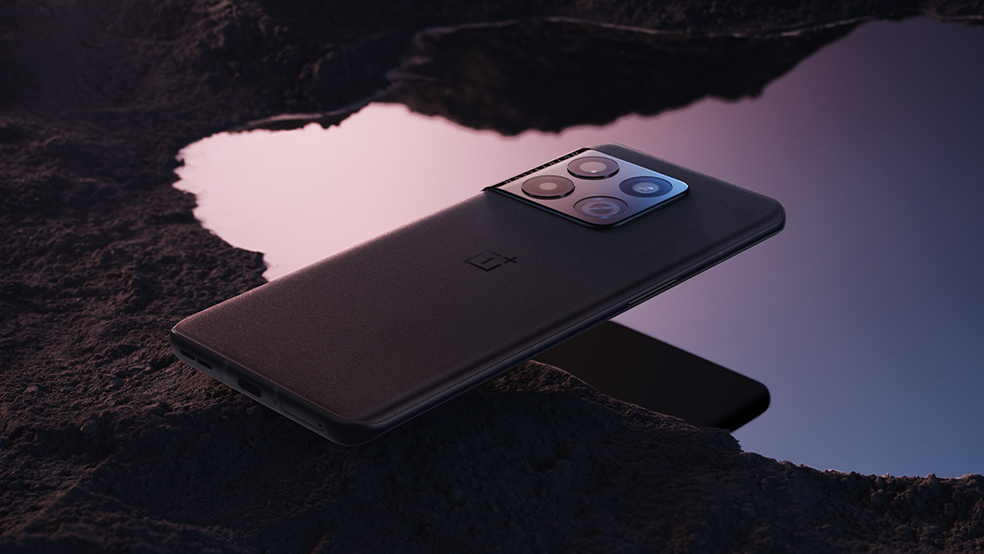OnePlus 10 Pro camera modes revealed, including one that requires an Apple Mac
Four new top-tier modes

We're in the midst of OnePlus 10 Pro tease season, because just like it does before every phone launch, OnePlus is slowly providing more information about its latest phone before a January 11 full unveiling.
Just days after a full spec reveal, wherein we proclaimed that we needed to hear about camera modes before judging the phone, OnePlus has gone and detailed some of the new shooting features the 10 Pro will pack. That's convenient!
These camera modes were designed alongside Hasselblad, marking the second generation of collabs between OnePlus and the Swedish camera company, and it seems that the OnePlus 10 family will really show the fruit of this relationship, because some of the modes sound fascinating.
Some camera samples were also shared - bear in mind, these were shot by a team of professionals likely using top supplementary kit and equipment, so they don't exactly reflect the average shot taken on the phone, just its potential.
OnePlus' new tease details four different camera shooting modes, which will make the most of the three rear cameras - these have resolutions of 48MP, 50MP and 8MP, but we don't actually know what lenses they're paired with for now, other than the fact one is main, another ultra-wide, the third telephoto.
We do know one lens used in the phone though - and that's the first mode teased! What a segue! OnePlus has confirmed that one of the cameras will get an ultra-wide lens, and one with a field-of-view of 150 degrees, which is a lot wider than those we see on most other smartphones (which typically hover around 120 degrees).
This lens will let you take super-wide pictures, for if you want to capture lots of scenery or a big group of people, and it'll also let you take 'fisheye' pictures. We'll share a camera sample of this below, but you'll know the style of photography if you've ever seen a music album cover in your life.
Sign up for breaking news, reviews, opinion, top tech deals, and more.

Next up, OnePlus has detailed some changes to the Hasselblad Pro Mode, which is... basically just Pro Mode, which you find on all camera phones, but with some slight tweaks.
In the OnePlus 10 Pro, this mode will shoot in 12-bit color, which is above the standard on phones which is 8-bit or 10-bit, and this means the sensor captures a bigger range of colors, which will be particularly useful if you like to use software to edit a snap after you've taken it.
The phone will also capture in a file format called 'RAW+', which is presumably different to standard 'RAW' in... some way. OnePlus' press release is light on the details, but it seems like RAW+ is a standard RAW picture but with some AI editing done by the phone itself.
The third mode detailed is similar, but for video - it's called Movie Mode and it lets you fiddle with settings like shutter speed and ISO for video. You can tweak these settings while shooting, which should allow for some artistic effects, and you can also shoot in LOG, which is similar to RAW but for video, and will let you color grade footage easier in post.
Finally, we come to the video mode mentioned in the headline: OnePlus Billion Color Solution. This lets you point-and-shoot and take pictures with... well, one billion colors, the clue's in the name - that means the color gamut is wider than on the OnePlus 9 Pro.

You can use this on any of the three rear cameras, and it sounds wonderful for capturing colorful subjects - but there's a catch.
You see, because of the file format the OnePlus Billion Color Solution uses, not all devices can actually open the pictures. In fact, other than the OnePlus 10 Pro itself, only recent Macs can open the pictures, which rather limits their post-capture use. You'll have to use an Apple computer to edit or convert them, unless you've got apps on the phone that can do it.
Hopefully soon, we'll see other devices get compatible with this troublesome HEIF format - but for now, if you want to use this photography feature, you better have a Mac ready too.

Tom Bedford joined TechRadar in early 2019 as a staff writer, and left the team as deputy phones editor in late 2022 to work for entertainment site (and TR sister-site) What To Watch. He continues to contribute on a freelance basis for several sections including phones, audio and fitness.